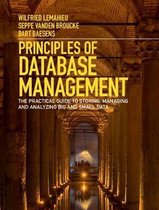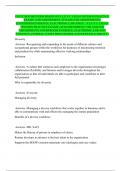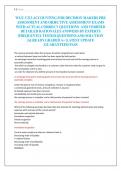Exam (elaborations)
Exam (elaborations) INF3703 Assignment 2 (COMPLETE ANSWERS) 2024 - DUE 28 June 2024 • Course • Databases II - INF3703 (INF3703) • Institution • University Of South Africa • Book • Principles of Database Management INF3703 Assignment 2 (COMPLETE ANSWERS) 2
Exam (elaborations) INF3703 Assignment 2 (COMPLETE ANSWERS) 2024 - DUE 28 June 2024 • Course • Databases II - INF3703 (INF3703) • Institution • University Of South Africa • Book • Principles of Database Management INF3703 Assignment 2 (COMPLETE ANSWERS) 2024 - DUE 28 June 2024 ;...
[Show more]













